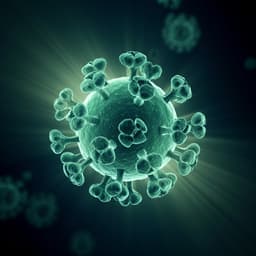
Medicine and Health
ACE2 gene variants may underlie interindividual variability and susceptibility to COVID-19 in the Italian population
E. Benetti, R. Tita, et al.
Explore groundbreaking research conducted by Elisa Benetti and colleagues, revealing significant ACE2 genetic variants that may influence COVID-19 susceptibility and severity in Italy. This study utilizes whole-exome sequencing data from 6930 individuals, uncovering insights that could shape our understanding of the pandemic.
Playback language: English
Related Publications
Explore these studies to deepen your understanding of the subject.







